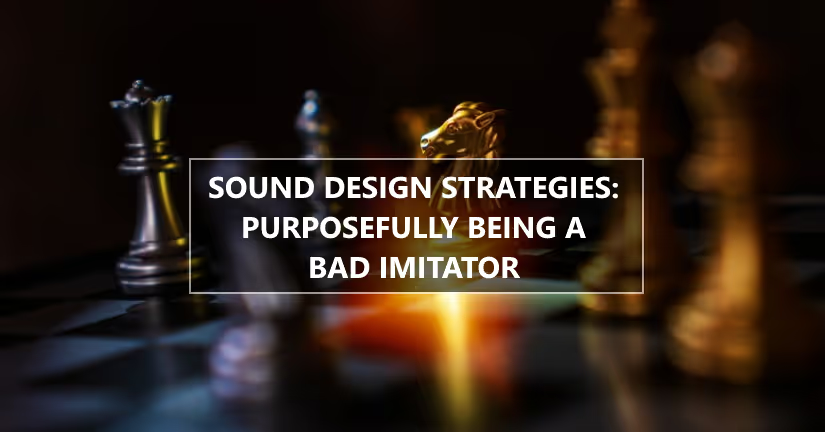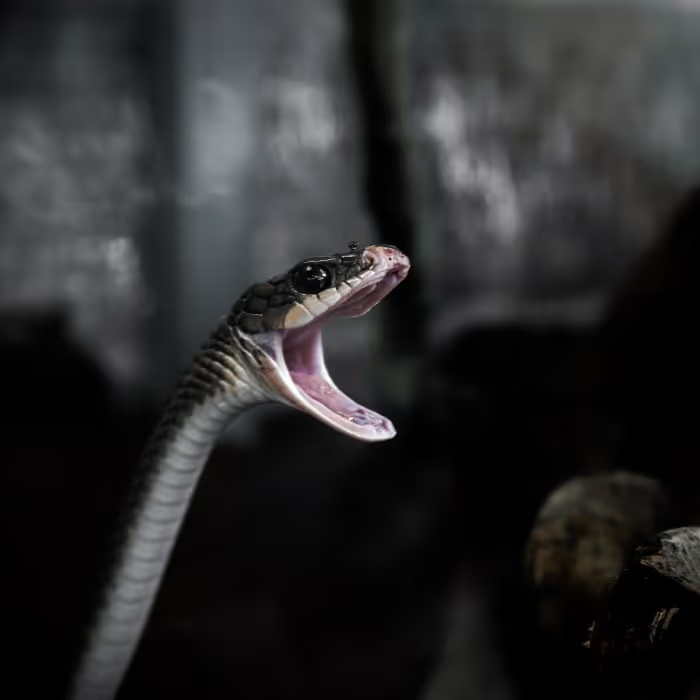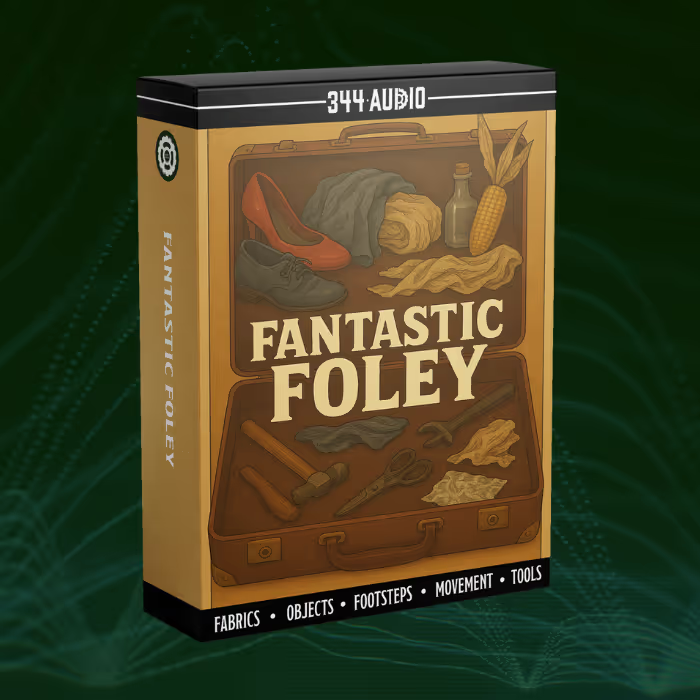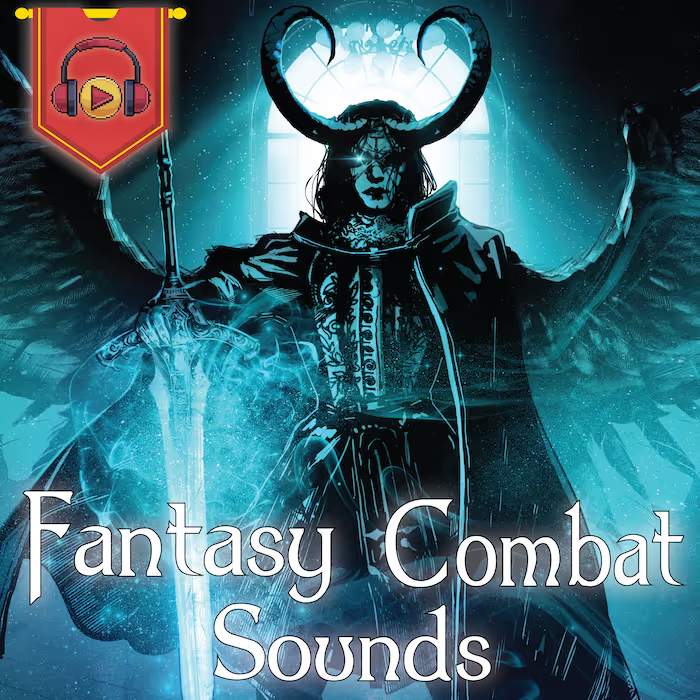When it comes to creativity in sound design, there are no rules. As long as the final product sounds good, and it serves your purpose, then you’ve done your job. Getting the job done can be accomplished in numerous ways, and everybody works differently. With that also comes all kinds of different techniques which might work for some people, but not for others. And in that same vein, not all techniques are applicable all the time, but rather, only useful for specific moments or for solving certain problems.
One of the techniques I’m talking about I sort of discovered when I was first starting out as a sound designer. Ever since then I’ve made it a part of my go-to tools in my toolbox, all the way till today. It’s nothing new or groundbreaking. A lot of people know about it or maybe even practice it without being aware of it. And it’s definitely not for everyone, so take it with a grain of salt and decide if it’s something that might be a fit for you.
The technique has to do with purposefully being a bad imitator.
Constant comparisons
The disparity between my skills and the skills of those sound designers I looked up to was so great that there was just no chance that my sounds could yet measure to anything of that caliber
I think using reference is one of the strongest tools and skills any sound designer should always try to practice, especially early on while developing their skills and finding their voice. But using references is a whole other topic for another time, even if it is tangentially related to being a bad imitator.
When I was pulling in all this reference to help steer the making of my sounds, I found that I simply didn’t have the experience or the skills to even analyze how the sounds were originally made, much less try to imitate achieving something that sounded super close to it. But in my stubbornness, I tried anyway and what I found was that in my process of trying to make a perfect imitation of the sound, my lack of skills served me in a roundabout kind of way and I would end up taking a path that I wouldn’t have otherwise! My resulting sound would be fairly different from the original, but still interesting and unique. More importantly, it was its own thing!
An epiphany
I realized I could leverage my lack of skill for my own creative benefit, and continue to try and imitate sounds that were in the realm of what I wanted to make, but by being a “bad imitator”, I ended up jogging my creative muscles and came up with fresh ideas I wouldn’t have otherwise
Here’s a super simple example: Let’s say I need to design an explosion that’s very generic, visually, but I want to make it a bit more interesting than a simple “boom”, and I also have never done an explosion before so I’m not even sure how to start on one.
I go looking for reference and I find this super cool explosion in a game that instead of going boom, it goes kcht-BOOM-woom and is using a tiger growl somewhere in the middle of it to give it more personality. I also listen closely and notice just how much low frequency content it has, and how nice the air rips on the high end. So not only am I getting inspired by the rhythm and cadence of the explosion, but also by the use of the frequency space, AND the use of animal growls. I start trying to imitate it and realize that having 3 syllables doesn’t fit my visuals well, so I do a kcht-WOOM instead. Then as I look for tiger growls in my library, I get an idea to instead use a metallic groan that sounds like an animal growl, which ends up fitting super nicely with my design. The more I keep shaping my sound the more I deviate from that original one I was trying to imitate, which still inspired me at every turn to make something I wouldn’t have conceived at all without it.
[inmini]
A new spin
The end product is something that might have some characteristics of the original sound, but is fully unique with the help of my own creativity
Completely separate categories of sound, but they might just share enough characteristics that fit the timing and aesthetic that you’re looking for, and let you start down a path of imitation that subsequently sparks your creativity to come up with something totally unique and interesting in a very lateral manner.
Even though I think this technique can be super valuable for people learning sound design, I honestly use it all the time when I’m designing sounds, to this day. There’s so many sounds where I want to do something more interesting than just what the visuals are calling for, or where I’m just not feeling inspired and anything I do just comes out a little too plain and boring, and I apply this technique even if it’s in a very lateral manner. Sometimes I even go as far as badly imitating sounds or sequences of sounds from disciplines other than sound design, like electronic music, or real life sounds I hear in my daily life. I know that getting perfect replicas of the sounds is not something that is easily done, so by default, by attempting to imitate them, I end up with wholly unique and interesting ideas that are born from taking the path to imitation, and failing.
A creative workout
When you’re doing your redesigns, don’t ignore the sounds of the original. Keep going back to it to see what the sounds are doing. Listen to what works and if you like it, try to imitate it
You’ll find yourself learning a lot faster than just staring at a blank screen trying to imagine what things should sound like. This will train up your muscles in terms of learning how to do things, how to utilize source, and plugins, and all kinds of sound design techniques. At some point down the road you’ll be able to leave this technique behind if it doesn’t serve you. But at the very beginning, when you know very little, I find that it’s extremely valuable.
Get more insights from Juan Pablo Uribe:
• You don’t need to know everything about sound
• How much gear & software do you need to be a good sound designer?
About Juan Pablo Uribe:
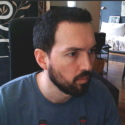
Juan Pablo Uribe is a senior video game sound designer, currently working for Bungie on Destiny. He’s also a columnist here on the A Sound Effect blog.

